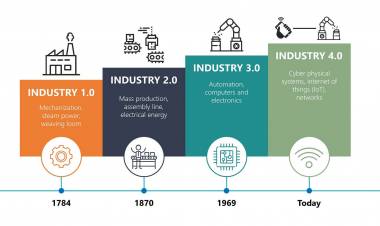Open Banking APIs: What, Why, When, Who, Where

Open Banking APIs: What, Why, When, Who, Where
Open Banking APIs, and what they can do for the banking and financial industry, have received a lot of attention recently. Ever since the EU’s PSD2 and the UK's Open Banking Standard was introduced at the start of 2018, Open Banking initiatives, lead by regulatory and technological developments, continue to advance and proliferate.
For those unfamiliar with the subject, the aim of Open Banking is to level the playing field for banks and tech companies and in the process provide a better experience for consumers.
Who wouldn't want that?
The continued effort behind Open Banking reform means that banks and financial institutions, using APIs, will have to open up and allow the sharing of a users financial data, such as spending habits and payments, with authorized third-party providers.
As you can imagine, the entire financial industry will eventually flow through APIs that facilitate the exchange of information and data.
What Are Open Banking APIs?
The PSD2 directive that came into being in January 2018 meant that Open Banking and the use of open APIs would enable third-party developers to build apps, websites, and services around banks and financial institutions.
These APIs, or application program interfaces, are used as a secure method of communication between third-parties and online banking systems. Typically this communication comes from FinTechs (that create the API) and banks that make use of that API.
This allows a secure way of giving providers access to a user’s financial information such as balances, account information, cash flow, and transactions.
In the UK, banks are now required, by law, to provide their client’s account information to companies in other industries such as payment initiators or account aggregators.
On the flip-side, and by using APIs, banks combine the digital services offered by other companies on their own platforms.
As Onur Simsek, Product Manager at Strands, explains, “Open Banking APIs enables banks by expanding their customer reach to address unserved and underserved areas. By doing so, it helps banks create new revenue streams from the distribution of services over third-parties. Also, partnering with third-parties will generate new opportunities to accelerate the bank’s innovation efforts and bring new products and business models to market.”
Today, there are 3 types of APIs that banks can make use of:
1. Private APIs - these are internal and inherent of the bank or financial institution and are used for information exchange within the same private system.
2. Partner APIs - these are open and built for strategic business partners to the bank or financial institution.
3. Open APIs - these make data available to third-parties (that aren’t necessarily partners of or working directly with the bank of financial institution).
Why Are Open Banking APIs Important?
APIs are important because they allow one computer program to be used by another. Thus, APIs are a means by which two different programs are able to communicate.
And, when you have banks that have old core-banking systems built several decades ago, APIs allow them to tap into new technologies.
By leveraging Open Banking APIs, banks not only update their IT infrastructures, but they can also increase customer satisfaction, expand their product lines and distribution channels, provide better services and customer support, and continue to stay ahead of the curve.
Banks that utilize API services allow them to deliver excellent and innovative user experience that ultimately helps them grow and stay relevant in this new era of increasing competition.
When Did Open Banking APIs Manifest?
APIs are nothing new, they have been around now for about 20 years, but for banking and the financial industry, their use has only grown in the last couple years.
Since PSD2 came into being in January 2018, Open Banking and the buildout and implementation of APIs to service this new concept began to increase.
Following in the footsteps of companies like Paypal and Google, banks that began experimenting early on with APIs and collaborating with third-parties included big names such as BBVA, Citibank, and Capital One.



















